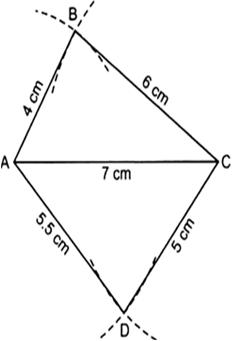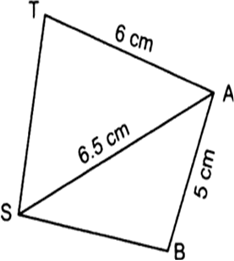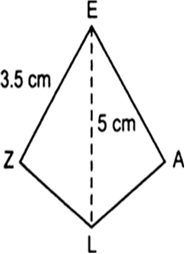Construct a quadrilateral ABCD when AB = 4 cm, BC = 6 cm, CD = 5 cm, AD = 5.5 cm and AC = 7 cm.
First of all make a rough sketch. Do not start construction without drawing a rough sketch showing sides, angles and diagonals, etc., with correct name.
Step I. Draw a rough sketch and mark the measurements.
Step II. Draw AC = 7 cm.
Step III. With A as centre and radius 4 cm, draw an arc above AC.
Step IV. With C as centre and radius 6 cm, draw another arc intersecting the previous arc at B.
Step V. With centre A and radius 5.5 cm, draw an arc below AC.
Step VI. With centre C and radius 5 cm, draw another arc to intersect the previous arc at D.
Step VII. Join DA and DC.

Thus, ABCD is the required quadrilateral.







